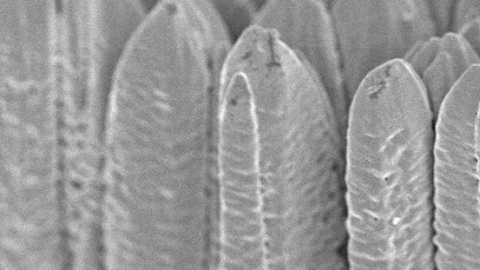
We have studied the effect of the yttria content on the paramagnetic centers in electron-irradiated yttria-stabilized zirconia (ZrO2: Y3+) or YSZ. Single crystals with 9.5 mol % or 18 mol % Y2O3 were irradiated with electrons of 1.0, 1.5, 2.0, and 2.5 MeV. The paramagnetic center production was studied by X-band electron paramagnetic resonance(EPR)spectroscopy. The same paramagnetic centers were identified for both chemical compositions, namely two electron centers, i.e., (i) F+-type centers (involving singly ionized oxygen vacancies), and (ii) so-called T centers (Zr3+ in a trigonal symmetry site), as well as hole-centers.
A strong effect is observed on the production of hole-centers that is strongly enhanced when doubling the yttria content. However, no striking effect is found on the electron centers (except the enhancement of an extra line associated with the F+-type centers). It is concluded that hole-centers are produced by inelastic interactions, whereas F+-type centers are produced by elastic collisions with no effect of the yttria content on the defect production rate. In the latter case, the threshold displacement energy (Ed) of oxygen is estimated from the electron-energy dependence of the F+-type center production rate, with no significant effect of the yttria content on Ed. An Ed value larger than 120 eV is found. This is supported by classical molecular dynamics (MD) simulations with a Buckingham-type potential that show Ed values for Y and O are likely to be in excess of 200 eV. Due to the difficulty in displacing O or Y atoms, the radiation-induced defects may alternatively be a result of Zr atom displacements for Ed = 80 ±1 eV with subsequent defect rearrangement.
CITATION
J.M. Costantini, F. Beuneu, S. Morrison-Smith, R. Devanathan, and W. J. Weber, Paramagnetic defects in electron-irradiated yttria-stabilized zirconia: Effect of yttria content, Journal of Applied Physics 110 (2011) 123506. External Link.